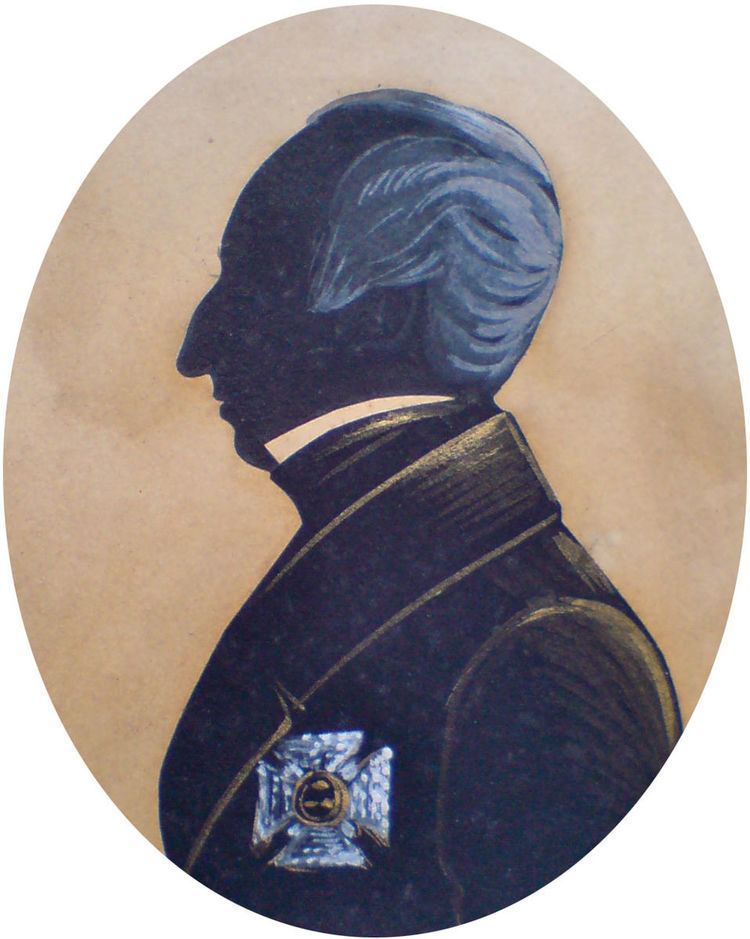Allegiance United Kingdom Years of service 1787-1844 Rank Lieutenant general | Service/branch British Army Education Eton College Children John Cameron | |
 | ||
Born 3 Jan 1773
Culchenna, Inverness, Scotland ( 1773-01-03 ) Commands held 43rd Regiment of Foot
Western District Battles/wars Invasion of Guadeloupe (1794)
Peninsular War Relations Captain Ewen Cameron, 43rd Foot, killed at Battle of the Côa, 24 July 1810 (brother)
General Sir Duncan Alexander Cameron GCB (1808-1888) (son)
Maj.-Gen. John Cameron RE, CB, FRS (1817-1878), Director-General of the Ordnance Survey (son) Died 23 November 1844, Guernsey Awards Order of the Bath, Order of the Tower and Sword Battles and wars Invasion of Guadeloupe, Peninsular War | ||
Lieutenant-General Sir John Cameron, KCB (3 January 1773 - 23 November 1844), of Culchenna, Inverness, Scotland, was a British Army officer and commander during the French Revolutionary Wars and the Napoleonic Wars.
Contents
Military career
Cameron was commissioned as an ensign on 25 September 1787. He served in the West Indies with the 43rd Regiment of Foot, under Sir Charles Grey, and was present at the siege of Fort Bourbon, the capture of Martinique, St. Lucia and Guadaloupe, and at the assault made by the enemy of Fleur d'épée; he next served under Brigadier-General C. Graham at Berville Camp in Guadaloupe; and commanded the Regiment engaged in the action of the 30 September 1794, and in different attacks made by the enemy until 4 October 1794, when he was severely wounded and taken prisoner, in which situation he remained two years (on a prison hull at Pointe-à-Pitre).
He received the Gold Medal for his services at the Battle of Vimeiro, Battle of Corunna, Battle of Bussaco, Battle of Salamanca, Battle of Vitoria, Siege of San Sebastián and Battle of Nive. "In consideration of his eminent services, and we can honestly assert that there was not a better soldier in any army; he was nominated a Knight Commander of the Military Order of the Bath, by his Sovereign. The Portuguese Government conferred the Order of the Tower and the Sword on Sir John for the able services he rendered to that nation."
Promoted to major-general on 19 July 1821, he was appointed a Knight Commander of the Order of the Bath in April 1822. He became Lieutenant-Governor of Plymouth and General Officer Commanding Western District on 25 September 1823. He was also appointed Colonel of the 93rd Regiment of Foot on 23 July 1832 and Colonel of the 9th Regiment of Foot on 31 May 1833.
He was promoted to lieutenant-general on 10 July 1837 and died at Guernsey on 23 November 1844.
Family
Camerons of Culchenna (also spelled Cuilcheanna) are descended from John, second son of Allan of the Forays, who was the XII. Chief of the Clan Cameron.
Cameron married Amelia Brock, daughter of Henry Brock, Esq., and niece of Admiral James Saumarez, 1st Baron de Saumarez on 10 October 1803, while stationed in Guernsey, Channel Islands. Amelia was a first cousin of Major-General Sir Isaac Brock. The children of Lieut.-Gen. Sir John Cameron and Amelia Brock are:
